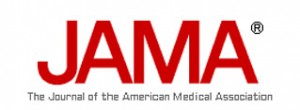Biblio du mois : Août 2016
Voici la biblio tant attendue de la rentrée !
Surtout l’occasion de jeter un oeil sur d’intéressantes revues notamment en période de canicule sur l’inhalation de fumées d’incendies mais également des études PK/PD pour les plus techniques d’entre nous.
Bien évidemment, n’oubliez pas de prendre un peu l’air avec un peu de ventilation parce qu’on aime ça !
Suivez-nous sur nos différents moyens de communication car la rentrée s’annonce chargée en événements #AJAR avec un AfterBloc spécial SFAR, la soirée de rentrée et bien d’autres formations !
Effets de la Noradrénaline versus Vasopressine précoce sur l’IRA dans le choc septique
Gordon et al., JAMA, 2016
http://jama.jamanetwork.com/article.aspx?articleid=2540403
Importance
Norepinephrine is currently recommended as the first-line vasopressor in septic shock; however, early vasopressin use has been proposed as an alternative.
Objective
To compare the effect of early vasopressin vs norepinephrine on kidney failure in patients with septic shock.
Design, Setting, and Participants
A factorial (2×2), double-blind, randomized clinical trial conducted in 18 general adult intensive care units in the United Kingdom between February 2013 and May 2015, enrolling adult patients who had septic shock requiring vasopressors despite fluid resuscitation within a maximum of 6 hours after the onset of shock.
Interventions
Patients were randomly allocated to vasopressin (titrated up to 0.06 U/min) and hydrocortisone (n = 101), vasopressin and placebo (n = 104), norepinephrine and hydrocortisone (n = 101), or norepinephrine and placebo (n = 103).
Main Outcomes and Measures
The primary outcome was kidney failure–free days during the 28-day period after randomization, measured as (1) the proportion of patients who never developed kidney failure and (2) median number of days alive and free of kidney failure for patients who did not survive, who experienced kidney failure, or both. Rates of renal replacement therapy, mortality, and serious adverse events were secondary outcomes.
Results
A total of 409 patients (median age, 66 years; men, 58.2%) were included in the study, with a median time to study drug administration of 3.5 hours after diagnosis of shock. The number of survivors who never developed kidney failure was 94 of 165 patients (57.0%) in the vasopressin group and 93 of 157 patients (59.2%) in the norepinephrine group (difference, −2.3% [95% CI, −13.0% to 8.5%]). The median number of kidney failure–free days for patients who did not survive, who experienced kidney failure, or both was 9 days (interquartile range [IQR], 1 to –24) in the vasopressin group and 13 days (IQR, 1 to –25) in the norepinephrine group (difference, −4 days [95% CI, −11 to 5]). There was less use of renal replacement therapy in the vasopressin group than in the norepinephrine group (25.4% for vasopressin vs 35.3% for norepinephrine; difference, −9.9% [95% CI, −19.3% to −0.6%]). There was no significant difference in mortality rates between groups. In total, 22 of 205 patients (10.7%) had a serious adverse event in the vasopressin group vs 17 of 204 patients (8.3%) in the norepinephrine group (difference, 2.5% [95% CI, −3.3% to 8.2%]).
Conclusions and Relevance
Among adults with septic shock, the early use of vasopressin compared with norepinephrine did not improve the number of kidney failure–free days. Although these findings do not support the use of vasopressin to replace norepinephrine as initial treatment in this situation, the confidence interval included a potential clinically important benefit for vasopressin, and larger trials may be warranted to assess this further.
Revue sur le Syndrome Aortique Aigu
Mussa et al., JAMA, 2016
https://jama.jamanetwork.com/article.aspx?articleid=2544646
Revue sur l’inhalation de fumées d’incendie
Sheridan, NEJM, 2016
http://www.nejm.org/doi/full/10.1056/NEJMra1601128
Facteurs pronostiques fonctionnels chez les personnes âgées sortant de réanimation
Ferrante et al, AJRCCM, 2016
http://www.atsjournals.org/doi/abs/10.1164/rccm.201506-1256OC#.V8VRbvmLTcs
Rationale
Most of the 1.4 million older adults who survive the intensive care unit (ICU) annually in the United States face increased disability, but little is known about those who achieve functional recovery.
Objectives
Our objectives were twofold: to evaluate the incidence and time to recovery of premorbid function within 6 months of a critical illness and to identify independent predictors of functional recovery among older ICU survivors.
Methods
Potential participants included 754 persons aged 70 years or older who were evaluated monthly in 13 functional activities (1998–2012). The analytic sample included 218 ICU admissions from 186 ICU survivors. Functional recovery was defined as returning to a disability count less than or equal to the pre-ICU disability count within 6 months. Twenty-one potential predictors were evaluated for their associations with recovery.
Measurements and Main Results
Functional recovery was observed for 114 (52.3%) of the 218 admissions. In multivariable analysis, higher body mass index (hazard ratio [HR], 1.07; 95% confidence interval [CI], 1.03–1.12) and greater functional self-efficacy (HR, 1.05; 95% CI, 1.02–1.08), a measure of confidence in performing various activities, were associated with recovery, whereas pre-ICU impairment in hearing (HR, 0.38; 95% CI, 0.22–0.66) and vision (HR, 0.59; 95% CI, 0.37–0.95) were associated with a lack of recovery.
Conclusions
Among older adults who survived an ICU admission with increased disability, pre-ICU hearing and vision impairment were strongly associated with poor functional recovery within 6 months, whereas higher body mass index and functional self-efficacy were associated with recovery. Future research is needed to evaluate whether interventions targeting these factors improve functional outcomes among older ICU survivors.
Effets de l’ECMO en Transplantation pulmonaire centre-dépendants
Hayes et al., AJRCCM, 2016
http://www.atsjournals.org/doi/abs/10.1164/rccm.201511-2222OC#.V8VRjPmLTcs
Rationale
Outcomes related to extracorporeal membrane oxygenation (ECMO) used to bridge patients to lung transplantation in the context of center differences in transplant expertise have not been investigated.
Objectives
To determine the effects of ECMO at time of transplant on survival in adult patients who underwent transplant surgery in historically low- and high-volume centers.
Methods
The United Network for Organ Sharing database was used to classify centers according to transplant volume between May 2005 and May 2010 as low-volume centers (bottom 50% of centers), medium-volume centers (next 25%), or high-volume centers (top 25%). Influences of ECMO on post-transplant survival were estimated among adults receiving lung transplants between June 2010 and June 2015 based on historic center volume in the preceding 5 years.
Measurements and Main Results
Sixty-five centers were classified according to lung transplant volume in 2005–2010, with 8,228 adults (279 on ECMO) who underwent transplants at these centers between June 2010 and June 2015 included in the survival analysis. In multivariable Cox analysis stratified by center, we found that, in historically low-volume centers, ECMO was associated with increased post-transplant mortality hazard (hazard ratio, 1.968; 95% confidence interval, 1.083–3.577; P = 0.026). In contrast, in historically high-volume centers, ECMO had no adverse influence on post-transplant survival (hazard ratio, 0.853; 95% confidence interval, 0.596–1.222; P = 0.386).
Conclusions
An adverse effect of ECMO at the time of lung transplant was evident in low-volume centers but absent in centers with experience of performing more than 170 lung transplants in the first 5 years of the lung allocation score era.
Pas de test d’extubation en pression positive en pédiatrie ?
Khemani et al., ICM, 2016
Purpose
Pressure support is often used for extubation readiness testing, to overcome perceived imposed work of breathing from endotracheal tubes. We sought to determine whether effort of breathing on continuous positive airway pressure (CPAP) of 5 cmH2O is higher than post-extubation effort, and if this is confounded by endotracheal tube size or post-extubation noninvasive respiratory support.
Methods
Prospective trial in intubated children. Using esophageal manometry we compared effort of breathing with pressure rate product under four conditions: pressure support 10/5 cmH2O, CPAP 5 cmH2O (CPAP), and spontaneous breathing 5 and 60 min post-extubation. Subgroup analysis excluded post-extubation upper airway obstruction (UAO) and stratified by endotracheal tube size and post-extubation noninvasive respiratory support.
Results
We included 409 children. Pressure rate product on pressure support [100 (IQR 60, 175)] was lower than CPAP [200 (120, 300)], which was lower than 5 min [300 (150, 500)] and 60 min [255 (175, 400)] post-extubation (all p < 0.01). Excluding 107 patients with post-extubation UAO (where pressure rate product after extubation is expected to be higher), pressure support still underestimated post-extubation effort by 126–147 %, and CPAP underestimated post-extubation effort by 17–25 %. For all endotracheal tube subgroups, ≤3.5 mmID (n = 152), 4–4.5 mmID (n = 102), and ≥5.0 mmID (n = 48), pressure rate product on pressure support was lower than CPAP and post-extubation (all p < 0.0001), while CPAP pressure rate product was not different from post-extubation (all p < 0.05). These findings were similar for patients extubated to noninvasive respiratory support, where pressure rate product on pressure support before extubation was significantly lower than pressure rate product post-extubation on noninvasive respiratory support (p < 0.0001,n = 81).
Conclusions
Regardless of endotracheal tube size, pressure support during extubation readiness tests significantly underestimates post-extubation effort of breathing.
Ventilation en pression pour diminuer le risque hémorragique ?
Kang et al., Anesthesiology, 2016
http://anesthesiology.pubs.asahq.org/article.aspx?articleid=2518841
Background
The aim of study was to evaluate the effect of mechanical ventilation mode type, pressure-controlled ventilation (PCV), or volume-controlled ventilation (VCV) on intra- and postoperative surgical bleeding in patients undergoing posterior lumbar interbody fusion (PLIF) surgery.
Methods
This was a prospective, randomized, single-blinded, and parallel study that included 56 patients undergoing PLIF and who were mechanically ventilated using PCV or VCV. A permuted block randomization was used with a computer-generated list. The hemodynamic and respiratory parameters were measured after anesthesia induction in supine position, 5 min after patients were changed from supine to prone position, at the time of skin closure, and 5 min after the patients were changed from prone to supine position. The amount of intraoperative surgical bleeding, fluid administration, urine output, and transfusion requirement were measured at the end of surgery. The amount of postoperative bleeding and transfusion requirement were recorded every 24 h for 72 h.
Results
The primary outcome was the amount of intraoperative surgical bleeding, and 56 patients were analyzed. The amount of intraoperative surgical bleeding was significantly less in the PCV group than that in the VCV group (median, 253.0 [interquartile range, 179.0 to 316.5] ml in PCV group vs. 382.5 [328.0 to 489.5] ml in VCV group; P < 0.001). Comparing other parameters between groups, only peak inspiratory pressure at each measurement point in PCV group was significantly lower than that in VCV group. No harmful events were recorded.
Conclusion
Intraoperative PCV decreased intraoperative surgical bleeding in patients undergoing PLIF, which may be related to lower intraoperative peak inspiratory pressure.
Etude pharmacocinétique sur l’effet des Intralipides
Dureau et al., Anesthesiology, 2016
http://anesthesiology.pubs.asahq.org/article.aspx?articleid=2534435
Background
Rapid intravenous administration of lipid emulsion has become the standard treatment of severe local anesthetic systemic toxicity. This experiment in volunteers aimed at determining the effect of Intralipid® administration on the time to neurologic symptoms.
Methods
Ropivacaine or levobupivacaine was infused intravenously in 16 volunteers (8 mg/min up to 120 mg) with 120 ml Intralipid® 20% (Fresenius, Paris France) or placebo infused at T + 2 min). Each subject received all four treatments in a crossover manner. The infusion was stopped after the intended dose had been administered or on occurrence of incipient neurologic signs of toxicity. The primary outcome was time-to-event. In addition, blood ropivacaine and levobupivacaine concentrations were measured.
Results
The dose infused was not different whether volunteers received placebo (81.7 ± 22.3 vs. 80.8 ± 31.7 mg, ropivacaine vs. levobupivacaine) or Intralipid® (75.7 ± 29.1 vs. 69.4 ± 26.2 mg, ropivacaine vs. levobupivacaine), P = 0.755, Intralipid® versusplacebo groups. Plasma concentrations were best modeled with an additional volume of distribution associated with Intralipid®. Simulations suggested that decreased peak concentrations would be seen if Intralipid® was given during a period of increasing concentrations after extravascular administration.
Conclusions
At modestly toxic doses of ropivacaine or levobupivacaine, we were unable to find any effect of the infusion of Intralipid® on the time to early signs of neurologic toxicity in volunteers. Peak concentration was decreased by 26 to 30% in the subjects receiving Intralipid®. Simulations showed that Intralipid® might prevent the rapid increase of local anesthetic concentration after extravascular administration.
Antibioprophylaxie single-shoot pour l’ALR
Bomberg et al., Anesthesiology, 2016
http://anesthesiology.pubs.asahq.org/article.aspx?articleid=2533134
Background
Catheter-related infection is a serious complication of continuous regional anesthesia. The authors tested the hypothesis that single-dose antibiotic prophylaxis is associated with a lower incidence of catheter-related infections.
Methods
Our analysis was based on cases in the 25-center German Network for Regional Anesthesia database recorded between 2007 and 2014. Forty thousand three hundred sixty-two surgical patients who had continuous regional anesthesia were grouped into no antibiotic prophylaxis (n = 15,965) and single-dose antibiotic prophylaxis (n = 24,397). Catheter-related infections in each group were compared with chi-square test after 1:1 propensity-score matching. Odds ratios (ORs [95% CI]) were calculated with logistic regression and adjusted for imbalanced variables (standardized difference more than 0.1).
Results
Propensity matching successfully paired 11,307 patients with single-dose antibiotic prophylaxis (46% of 24,397 patients) and with 11,307 controls (71% of 15,965 patients). For peripheral catheters, the incidence without antibiotics (2.4%) was greater than with antibiotic prophylaxis (1.1%, P < 0.001; adjusted OR, 2.02; 95% CI, 1.49 to 2.75, P < 0.001). Infections of epidural catheters were also more common without antibiotics (5.2%) than with antibiotics (3.1%, P < 0.001; adjusted OR, 1.94; 95% CI, 1.55 to 2.43, P < 0.001).
Conclusions
Single-dose antibiotic prophylaxis was associated with fewer peripheral and epidural catheter infections.
Impact de l’hypothermie thérapeutique sur l’oedème après AVC hémorragique
Volbers et al., Stroke, 2016
http://stroke.ahajournals.org/content/47/9/2249.abstract
Background and Purpose
Intracerebral hemorrhage (ICH) causes high morbidity and mortality. Recently, perihemorrhagic edema (PHE) has been suggested as an important prognostic factor. Therapeutic hypothermia may be a promising therapeutic option to treat PHE. However, no data exist about the optimal timing and duration of therapeutic hypothermia in ICH. We examined the impact of therapeutic hypothermia timing and duration on PHE evolution.
Methods
In this retrospective, single-center, case–control study, we identified patients with ICH treated with mild endovascular hypothermia (target temperature 35°C) from our institutional database. Patients were grouped according to hypothermia initiation (early: days 1–2 and late: days 4–5 after admission) and hypothermia duration (short: 4–8 days and long: 9–15 days). Patients with ICH matched for ICH volume, age, ICH localization, and intraventricular hemorrhage were identified as controls. Relative PHE, temperature, and intracranial pressure course were analyzed. Clinical outcome on day 90 was assessed using the modified Rankin scale (0–3=favorable and 4–6=poor).
Results
Thirty-three patients with ICH treated with hypothermia and 37 control patients were included. Early hypothermia initiation led to relative PHE decrease between admission and day 3, whereas median relative PHE increased in control patients (−0.05 [interquartile range, −0.4 to 0.07] and 0.07 [interquartile range, −0.07 to 0.26], respectively; P=0.007) and patients with late hypothermia initiation (0.22 [interquartile range 0.12–0.27]; P=0.037). After day 3, relative PHE increased in all groups without difference. Outcome was not different between patients treated with hypothermia and controls.
Conclusions
Early hypothermia initiation after ICH onset seems to have an important impact on PHE evolution, whereas our data suggest only limited impact later than day 3 after onset.
Précharge-dépendance prédictive de la réponse à la Phényléphrine
Rebet et al., EJA, 2016
BACKGROUND
Although phenylephrine is widely used in the operating room to control arterial pressure, its haemodynamic effects remain controversial.
OBJECTIVE
We hypothesised that the effect of phenylephrine on cardiac output is affected by preload dependency.
DESIGN
A prospective observational study.
SETTING
Single-centre, University Hospital of Caen, France.
PATIENTS
Fifty ventilated patients undergoing surgery were studied during hypotension before and after administration of phenylephrine.
MAIN OUTCOME MEASURES
Cardiac index (CI), stroke volume (SV), corrected flow time, mean arterial pressure, pulse pressure variations (PPV) and systemic vascular resistance index were used to assess effects of changes in preload dependency.
RESULTS
Twenty seven (54%) patients were included in the preload-dependent group (PPV ≥ 13%) and 23 (46%) in the preload-independent group (PPV < 13%) before administration of phenylephrine. For the whole cohort, phenylephrine increased mean arterial pressure [58 (±8) mmHg vs. 79 (±13) mmHg; P < 0.0001] and calculated systemic vascular resistance index [2010 (1338; 2481) dyn s cm−5 m−2 vs. 2989 (2155; 3870) dyn s cm−5 m−2; P < 0.0001]. However, CI and SV decreased in the preload-independent group [2.3 (1.9; 3.7) l min−1 m−2vs. 1.8 (1.5; 2.7) l min−1 m−2; P < 0.0001 and 65 (44; 81) ml vs. 56 (39; 66) ml; P < 0.0001 for both] but not in the preload-dependent group [respectively 2.1 (1.8; 3.5) l min−1 m−2 vs. 2.1 (1.8; 3.3) l min−1 m−2; P = 0.168 and 49 (41; 67) ml vs. 53 (41; 69) ml; P = 0.191]. Corrected flow time increased [294 (47) ms vs. 306 (56) ms; P = 0.031], and PPV decreased [17 (15; 19) % vs.12 (14; 16) %; P < 0.0003] only in the PPV at least 13% group.
CONCLUSION
The effects of phenylephrine on CI and SV depend on preload. CI and SV decreased in preload-independent patients through increase in afterload, but were unchanged in those preload-dependent through increased venous return.
Revue sur les PK/PD des anesthésiques inhalés
Hendrikx et al., EJA, 2016





 30 août 2016
30 août 2016






 Étiquettes :
Étiquettes :